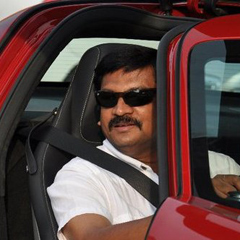When disaster came pouring down, not only boats and helicopters but also tippers, jeeps and JCBs came to the rescue of the flood affected. When cars, buses and mini lorries failed, how did these vehicles come up trumps? The main reason was their special design. Besides, the fact that they were handled by experienced hands also made a big difference. Apart from knowing why they made a big difference in such a situation, one should understand the damages they could suffer and how they can be rectified.
Taurus was the star
Factors like higher exhaust, capability to negotiate bad roads, brute strength and higher body make tippers and bigger lorries sought-after rescue vehicles. In Alappuzha and Kuttanad, large tippers known as Taurus facilitated the rescue of thousands of people. (Though Taurus is a Leyland vehicle, all high capacity tippers are now known as Taurus).
Testing waters

Even bigger lorries may find the going tough in deep water. Even if the engine is not damaged, repair costs could hit Rs 60,000. The usual repair works include rusting of the brake system that calls for its dismantling and cleaning, loss of lubricants, loss of grease causing damage to bearings, and changing axle oil and gearbox oil. Sometimes, engine oil could have to be changed. In such circumstances, the engine too needs to be cleaned.
Shutting down lights won’t help
Electrical components need to be inspected thoroughly. Most drivers didn't switch on lights to minimise damages. However, since common rail direct fuel injection engines can't work without electrical components, it is not much of a help. If water enters the exhaust, check the silencer and catalytic converter. In some circumstances, the catalytic converter must be replaced.
Four-wheel drive
Water is not a big issue for four-wheel drives such as jeeps and SUVs. Off-road tyres and higher air intake (snorkel), exhaust pipe and suspension help them tackle water effortlessly. Even if they are stuck in the water, they can rely on equipment like winches, roll cage, four-point seat belts, stronger engine, and brakes to get them out of trouble. Above all these, an experienced hand could make a world of a difference in such situations.
Expected works
All filters would have to be changed. Differential oil, gearbox oil and engine oil all need to be changed. Chances of starter and clutch getting damaged are high. Brake pads too need to be changed. Steering rods could suffer damages. Oils and filters alone could set you back by a minimum of Rs 15,000. The clutch will cost between Rs 8,000 and Rs 25,000. The total cost could be in the range of Rs 50,000.

King of water
JCBs and tractors are best suited for water. When jeeps and other off-road vehicles can handle 3-feet water, JCBs can wade through 5-feet deep water. Besides, they have fewer chances of getting stuck in water. Comparatively, repairs too would be minimal for JCBs and tractors. Water could enter hydraulic circuits; they need to be cleaned.


















